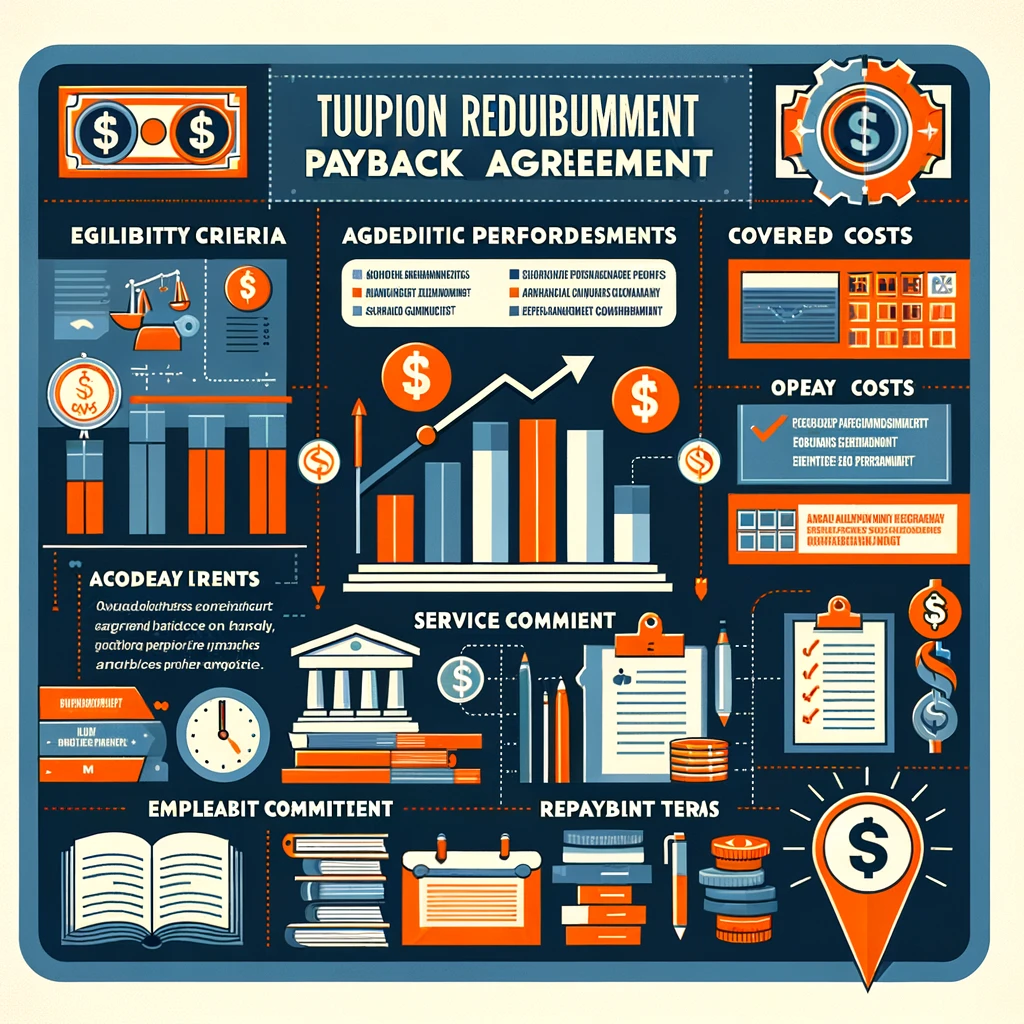
Tuition reimbursement programs offer employees the chance to further their education and skills, with the cost partially or fully covered by their employer. These initiatives not only benefit the workforce but also enhance the overall competitiveness and efficiency of a business. However, to ensure that the investment in employee development yields benefits for both parties, many organizations require a tuition reimbursement payback agreement. This detailed guide delves into what these agreements entail, their legal basis, key components, and best practices for drafting an agreement that is fair and enforceable, supplemented with authoritative .gov, .edu, and Wikipedia links for enhanced credibility.

A tuition reimbursement payback agreement is a contract between an employer and an employee where the employer agrees to pay for the employee's education in return for the employee's commitment to remain with the company for a specified period after the educational program is completed. Should the employee leave the company before this period, they are obligated to repay the tuition costs.
The enforceability of tuition reimbursement payback agreements varies by jurisdiction but is generally upheld if the terms are reasonable and clearly communicated. The U.S. Department of Labor provides guidelines on employee benefits, while state-specific laws can offer further insights. Additionally, educational resources such as Cornell Law School’s Legal Information Institute can provide valuable legal definitions and concepts related to contract law.
Define who is eligible for tuition reimbursement, detailing any specific criteria such as employment status, department, or tenure within the company.
Specify which educational expenses are covered, including tuition, books, and other fees. Clarify any caps on the amount the company will reimburse.
Set forth academic performance requirements, such as maintaining a minimum grade point average, to qualify for reimbursement.
The heart of the agreement — detail the length of time the employee must remain with the company post-graduation to avoid repayment. This period should be reasonable and proportional to the investment.
Outline the conditions under which the employee must repay the tuition costs, including a prorated repayment schedule if applicable.
Explain the process for obtaining reimbursement, including any approval steps, documentation requirements, and deadlines.
Ensure that the terms of the agreement are clearly communicated and understood by both parties. This includes having a detailed discussion about the agreement before it is signed.
For employers, it’s crucial to balance the company's interests with fairness to the employee. Agreements should not place undue burdens on employees or restrict their career progression.
Maintain thorough records of all agreements, approvals, receipts, and other relevant documents. This will be invaluable in the case of disputes or audits.
Both parties should consider having the agreement reviewed by legal counsel to ensure that it complies with current laws and is enforceable.
Disputes over tuition reimbursement payback agreements can arise from misunderstandings about the terms or disagreements over the implementation of the agreement. Mediation or arbitration can be effective ways to resolve disputes without resorting to litigation.

Create & Review Your Contracts 10x Quality and Ease
Lawyer-level AI handles all your contract needs, with real lawyers providing safeguarding support

Tuition reimbursement payback agreements are powerful tools that benefit both employers and employees by fostering professional development and loyalty. By adhering to best practices in drafting these agreements and ensuring clear communication and fairness, organizations can create a positive and productive learning environment. For additional information and templates, consulting legal experts and exploring resources on .gov and .edu websites, as well as Wikipedia, can provide further guidance.
Create & Review All Your Contracts Online With LegalNow AI